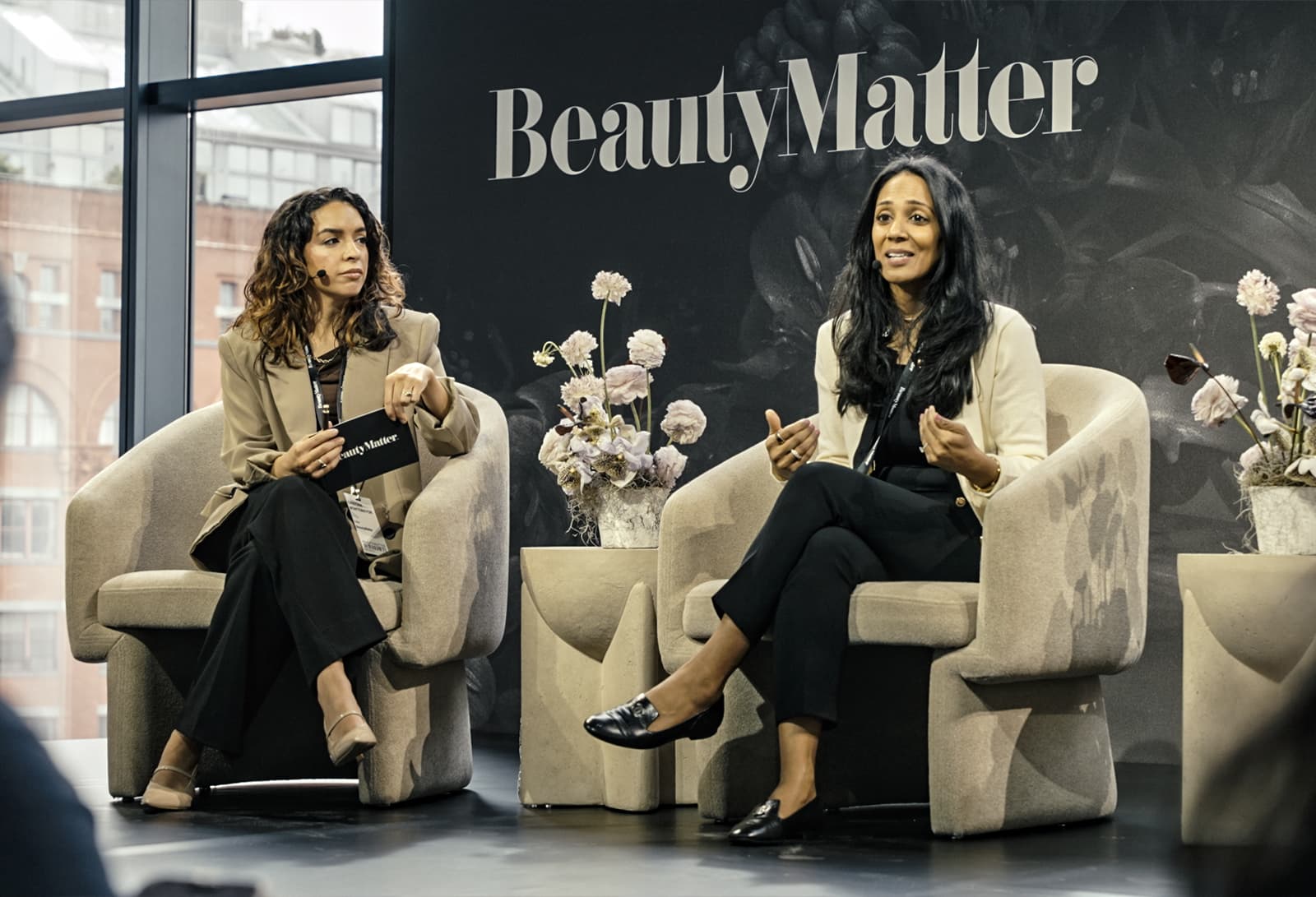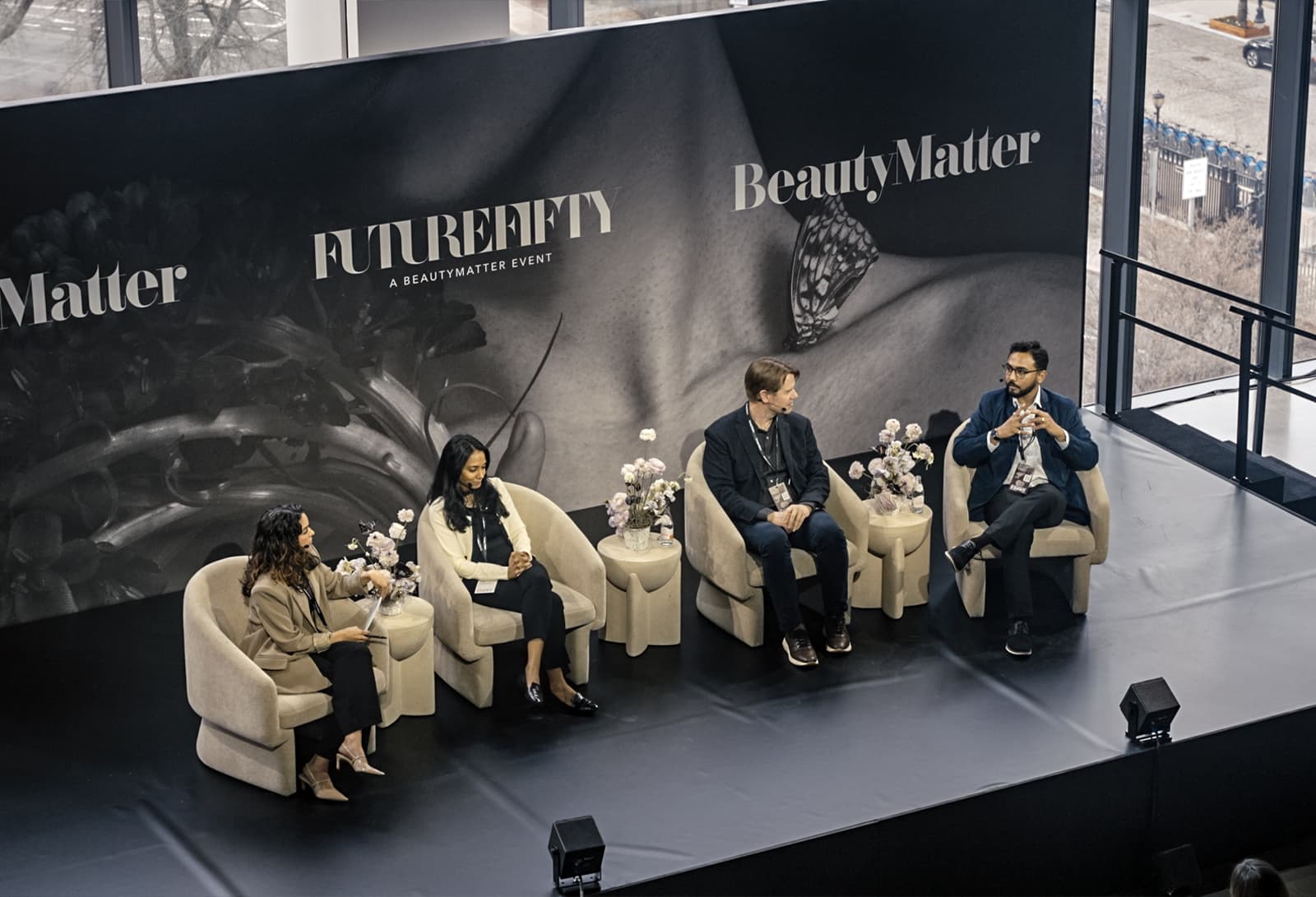The beauty industry has gradually entered into an era where wellness is no longer a side pursuit but the main event, making the concept of aging undergo a radical transformation. Once synonymous with decline, aging is now viewed through the lens of optimization, resilience, and regeneration. Within this transformation lies the skincare industry that is no longer defined by superficial promises, but fueled by cutting-edge science and bio-innovation.
At BeautyMatter’s 2025 FUTURE50 Summit, a panel titled “From Anti-Aging to Age-Defying: Skincare’s Role in the Longevity Revolution” brought together longevity science experts across biotech, clinical medicine, and global beauty brands. Together, these experts, including Chris Rinsch PhD, co-founder and President of Timeline; Dr. Poonam Desai, founder of Longevity Place; and Rishabh Kala PhD, Director of Advanced Technologies-Skin Biology at The Estée Lauder Companies, explored how aging is being redefined—not resisted—and how skincare is emerging as a foundational pillar in the quest to extend not just lifespan, but health span.
From Vanity to Vitality
“The skin is the largest organ of the body. It’s our window to the world,” said Dr. Rinsch, co-founder of the mitochondrial health company. “It receives all the UV light and environmental exposure, which leads to inflammation and oxidative stress. When we talk about longevity, skin health is not optional, it’s essential.”
Longevity physician Dr. Poonam Desai echoed this sentiment. “Your skin reflects what’s going on at the cellular level. Inflammation, gut health issues, and nutritional deficiencies all show up first in the skin,” she explained. “We used to talk about skin aesthetically. Now we talk about it biologically.” That shift from beauty to biology is pushing the industry into deeper scientific territory, tackling aging at its root: the cell.
Central to the discussion was the concept of cellular senescence, a process where aging cells become dysfunctional and pro-inflammatory. This is dubbed “zombie cells” by researchers. “These cells can’t divide, and worse, they infect their neighbors,” said Dr. Kala. “Our job as scientists is to clear out those zombie cells and supercharge the mitochondria, the energy factories of our skin cells.”
Dr. Rinsch offered a compelling example from Timeline’s work with the postbiotic Urolithin A, a compound derived from the transformation of pomegranate by gut microbes. Only 30% of people can produce it naturally, but Timeline found it stimulates mitophagy, the cellular process of recycling damaged mitochondria. “We started with oral trials showing improvement in muscle strength and endurance. Then we moved to topicals and saw the same effect—revitalization at the cellular level,” he said.
Skincare as Preventative Medicine
What makes this wave of skincare innovation particularly potent is its embrace of preventative healthcare. “Most of my patients come not because they’re sick, but because they don’t want to be,” Dr. Desai explained. “They’re saying, ‘I want to slow down aging before it catches me.’” Her approach includes genetic profiling, 150+ biomarker assessments, lifestyle analysis, and even microbiome mapping.
“The patient might walk in asking about wrinkles or dry skin,” she said, “but we’re looking at sleep, hormones, nutrition, even toxin exposure. Skin is the readout for how well your body is managing damage and repair.” This medicalized view of skincare is pushing brands to substantiate claims with hard science, and consumers are demanding it.
The panel also unanimously agreed that the term "anti-aging" is obsolete. In its place is a new vocabulary centered around cellular optimization, skin resilience, and health span. “We’re shifting away from treating wrinkles like the enemy,” said Dr. Rinsch. “It’s no longer just about looking young but keeping your skin functional and strong.” This has real implications for how brands formulate and message their products. “We’re moving beyond smoothness and glow,” added Dr. Kala. “Consumers want to feel youthful, energized, and connected. Longevity is about emotional, social, and biological vitality.”


While longevity is having a cultural moment, The Estée Lauder Companies have been investing in the science for two decades. “After the Human Genome Project, we realized genetics alone couldn’t explain aging,” Dr. Kala said. “That’s when we pivoted to epigenetics—how lifestyle, environment, and ingredients can modulate gene expression.”
The result was Estée Lauder’s epigenetic platform, which has led to technologies like SIRTIVITY LP and Tripeptide-32, found in its Advanced Night Repair and Re-Nutriv lines. “We’ve shown in vitro that we can reverse cellular age, taking 60-year-old skin cells and returning them to a 30-year-old profile,” he said.
Their approach now includes partnerships with the Stanford Center on Longevity and a proprietary Longevity Collective of researchers across sleep, biology, and lifestyle medicine. “This is because skin doesn’t exist in isolation,” said Dr. Kala. “Sleep, social connection, and emotional well-being all matter.”
A New Era for Skincare, Rooted in Longevity
A major theme across the panel was hyper-personalization. “Not every ingredient is right for every person,” said Dr. Desai. “Copper peptides and NAD [nicotinamide adenine dinucleotide] are trending, but we need to know who actually benefits. That’s where diagnostics and precision skincare come in.” This evolution may even become time sensitive. “Imagine a serum that works best with your circadian rhythm,” she continued. “My ideal application might be at 9 p.m., while others could be 10:30 p.m. We’re entering an era.”
Dr. Rinsch added that layering topicals with ingestibles is likely the next frontier. “We’ll move from single-use products to inside-out regimens, guided by diagnostics and biomarkers,” he said. “It’s the convergence of dermatology, wellness, and biohacking.”
As the lines between wellness, medicine, and skincare continue to blur, the longevity movement is not just redefining how we age—it’s redefining how we live. This new era of skincare doesn’t begin at the surface, but in the cell, in the mitochondria, and in the markers that signal health long before the first wrinkle appears.
Where anti-aging once positioned itself as a battle against time, longevity reframes the conversation from about resisting age to about engaging with it intelligently, proactively, and holistically. The brands and practitioners who understand this shift—and who root their products in science, systems thinking, and care—aren’t just shaping the future of beauty; they’re helping define the future of health.
Key Takeaways: